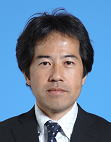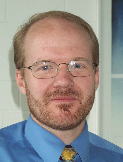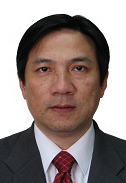 Prof. Kenneth S. Breuer, Brown University, USA Prof. Kenneth S. Breuer, Brown University, USA |
 |
Contact line dynamics at the nanoscale with and without evaporation |
|
The liquid-solid-vapor contact line has been a topic of intense research
for many years and represents a point at wich the continuum description
of a fluid breaks down, and need to be modified by molecular description.
The physics can be made more difficult when complex interactions, such
as surface hydrophobicity and/or volatile liquids are introduced to the
problem. In this talk we present some recent research on the microscale
behavior of moving contact lines with both evaporating and non-volatile
fluids and on both hydrophilic and hydrophobic surfaces.
|
 Prof. Stephane Colin, University of Toulouse, France Prof. Stephane Colin, University of Toulouse, France |
 |
Experimental techniques for the analysis of gaseous microflows |
Gas microflows must be accurately
controlled for a lot of MEMS applications (micro-heat exchangers, pressure
gauges, fluidic micro-actuators for active control of aerodynamic flows, mass
flow and temperature micro-sensors, micropumps and microsystems for mixing or
separation for local gas analysis, mass spectrometers, vacuum and dosing
valves…). Advanced models have recently been developed for the analysis of
hydrodynamics and heat transfer of gas microflows. They cover the different regimes
of these rarefied flows: slip flow, transition and free molecular regimes. These
models, however, are generally based on simplifying assumptions, the validity
of which requires an experimental validation. This paper presents the techniques
available for the global and local experimental analysis of gas microflows. It
is underlined that only few accurate experimental data are available in the
literature. The current limits of flowrate, pressure, velocity or temperature
measurements are detailed and future developments of experimental techniques are
discussed.
|
 Prof. Tomoaki Kunugi, Kyoto University, Japan Prof. Tomoaki Kunugi, Kyoto University, Japan |
 |
VISUALIZATION AND NUMERICAL
SIMULATION ON SUBCOOLED POOL BOILING |
| This study focuses on the clarification of the bubble behaviors of the subcooled pool boiling via visualization by using a high-speed camera, the discussion on its mechanism, and finally the establishment of a boiling and condensation model for numerical simulation on the subcooled pool boiling phenomena. The boiling and condensation model has been improved by introducing the following models based on the quasi-thermal equilibrium hypothesis; (1) a modified phase-change model based on the enthalpy method for the water-vapor system, (2) a relaxation time derived by considering unsteady heat conduction. Resulting from the numerical simulations on the subcooled pool boiling based on the MARS (Multi-interface Advection and Reconstruction Solver) with improved boiling and condensation model, the numerical results regarding the bubble growth process of the subcooled pool boiling show in good agreement with the experimental observation results and the existing analytical equations. Moreover, In order to further progress the numerical simulations of bubble growth process, the patch-work calculations with changing grid size have been performed. |
 Dr. Khellil Sefiane, University of Edinburgh, UK Dr. Khellil Sefiane, University of Edinburgh, UK |
 |
Fundamental studies of nanofluid solutions two phase heat transfer and phase change |
Nanofluid are stable suspensions of nanometre scale particles in a base
fluid. Many indicate that adding even a low concentration of nanoparticles
can significantly enhance the thermal conductivity, so nanofluids have
attracted a lot of interest with regards to possible heat transfer application.
Many works have reported impressive enhancement of heat transfer in single
and two phase system when nanofluids are used. Some contradictory results
have also been reported about the effect of nanoparticles in two phase
heat transfer. Indeed in some experimental investigation a degradation
of heat transfer is reported rather than enhancement. The underlying machanisms
through which nanoparticles act when used in two phase heat transfer application
is still an open question.
In this talk we present the results of experimental investigations on the
effect of nanoparticles during the evaporation of sessile droplets and
vapour bubbles. The observed effects of these latter on the rate of evaporation
as well the three phase cantact line dynamics could give some clues to
the underlying mechanisms when attempting to understand fro example boiling
of nanofluids.
We present the data about the effect the presence of nanoparticle have
on the evaporation rate of droplets on heated substrates as well as in
a educed pressure environment. The presence of nanoparticles is found to
promote pinning of the three phase contact line hence delaying the departure
of vapour bubbles.
These fundamental findings can be useful in clarifying the controlling
mechanisms when nanofluids are used for heat transfer applications. |
 Prof. Naoki Shikazono, The University of Tokyo, Japan Prof. Naoki Shikazono, The University of Tokyo, Japan
|
 |
Liquid Film in Micro Tube Two Phase Flow Systems |
| Liquid film thickness is a very important parameter which
dominates two phase flow heat transfer in micro tubes. It is investigated that liquid film thickness
under steady condition depends basically on capillary number, but it also shows
strong dependence on Reynolds number even in micro flows. Under flow boiling or condensation conditions,
bubble velocity is not constant but accelerated or decelerated due to phase
change. It is thus very important to
investigate the effects of acceleration and deceleration on the formation of liquid
film. In the present paper, experimental
investigation of liquid film thickness using confocal method is reported. Finally, some numerical studies in micro tube
heat exchangers using proposed correlations are conducted. |
 Prof. Peter Stephan, Darmstadt University of Technology, Germany Prof. Peter Stephan, Darmstadt University of Technology, Germany |
 |
Characteristics
of evaporative heat transfer in the vicinity of a 3-phase contact line |
In many applications such as e.g. nucleate or flow boiling, drop impact
on a hot wall, or evaporation from porous structures 3-phase contact lines
occur where the evaporative heat transfer characteristics differ from that
in the bulk fluid. Experimental and numerical investigations are presented
and analysed with a focus on the special local heat and fluid transport
phenomena. The scales of interest in these investigations range from a
nanometre scale to millimetre scale, approximately. Advancing and receding
contact lines show rather different heat transfer characteristics than
static contact lines do. Thus, the evaporative heat transfer might be strongly
influenced by contact line velocity and apparent contact angle. Vice versa,
the heat flux and wall temperature superheat influence the apparent contact
angle. The interaction of these parameters will be discussed qualitatively
in a more general sense and quantitatively for some typical examples.
|
 Prof. Xing Zhang, Tsinghua University, China Prof. Xing Zhang, Tsinghua University, China |
 |
Novel heat and charge transport properties of nanometallic films and the
potential applications |
| In view that electron is the mutual carrier of charge and heat in metal,
the transport properties of these two should exhibit the same changes in
nanometallic films. However, we have found several novel heat and charge
transport characteristics of nanometallic films. One significant difference
is that the decrease ranges of the in-plane thermal and electrical conductivities
of nanometallic films are different from simultaneous measurement of these
two on suspended nanofilms. This indicates that the thermal and electrical
transports do not obey the Wiedemann-Franz law, which is famous classical
in solid physics. Another difference is that the electron–phonon relaxation
is nearly the same as that of bulk metal while the electrical resistivity
greatly increases and exhibit significant size effect. These two reveals
that due to the different effect of surface and grain boundary scatterings
on thermal and electrical transport, the nanometallic films exhibit several
novel transport properties, which will provide potential applications,
i.e., new thermoelectric materials. And hence, we also developed a new
self-heating 2-omega method used to study and evaluate new thermoelectric
materials. Feeding an ac electric current at the frequency of 1-omega into
the specimen creates a temperature fluctuation at the frequency of 2-omega
and according to the Seebeck effect, a Seebeck voltage fluctuation is generated
at 2-omega. The Seebeck coefficient can be steadily extracted from the
relationship between 2-omega voltage and frequency omega or between 2-omega
and 3-omega voltages. |
|
|